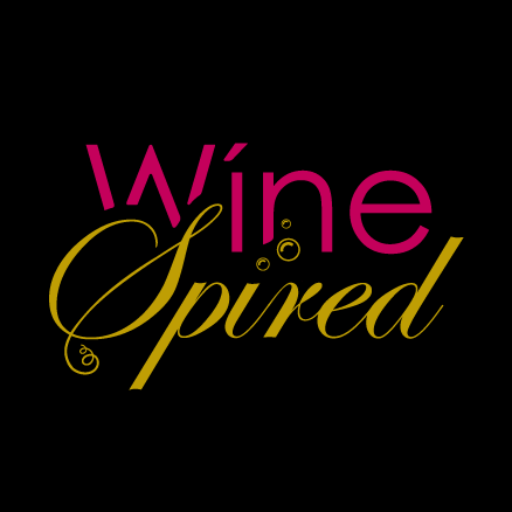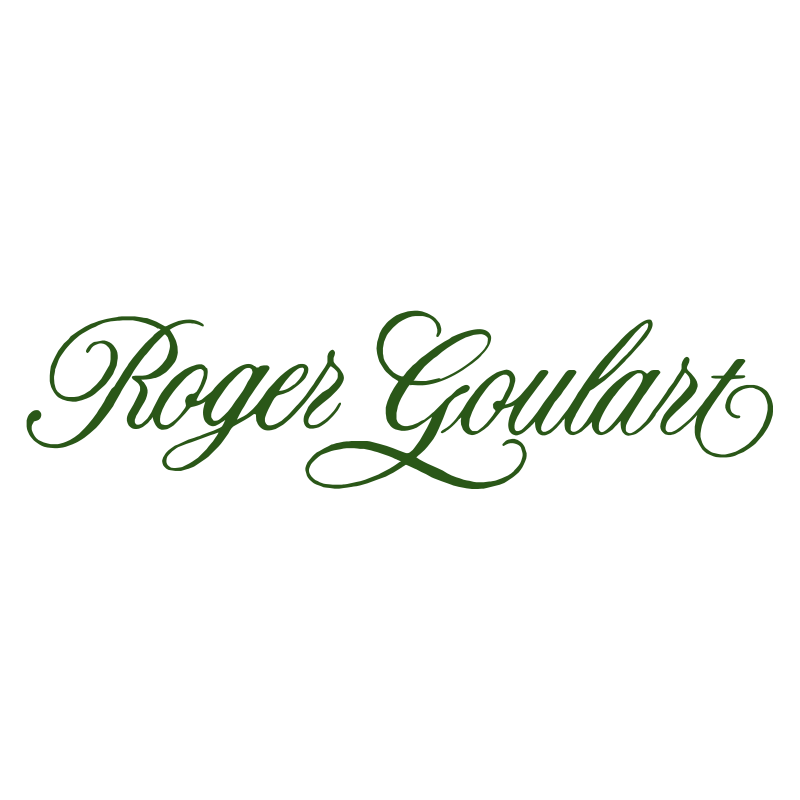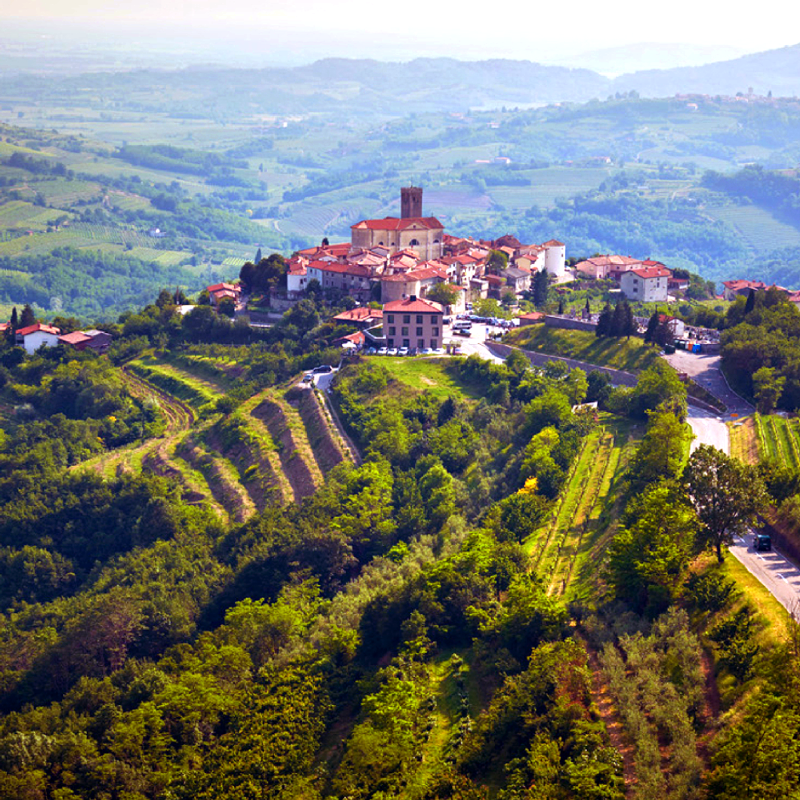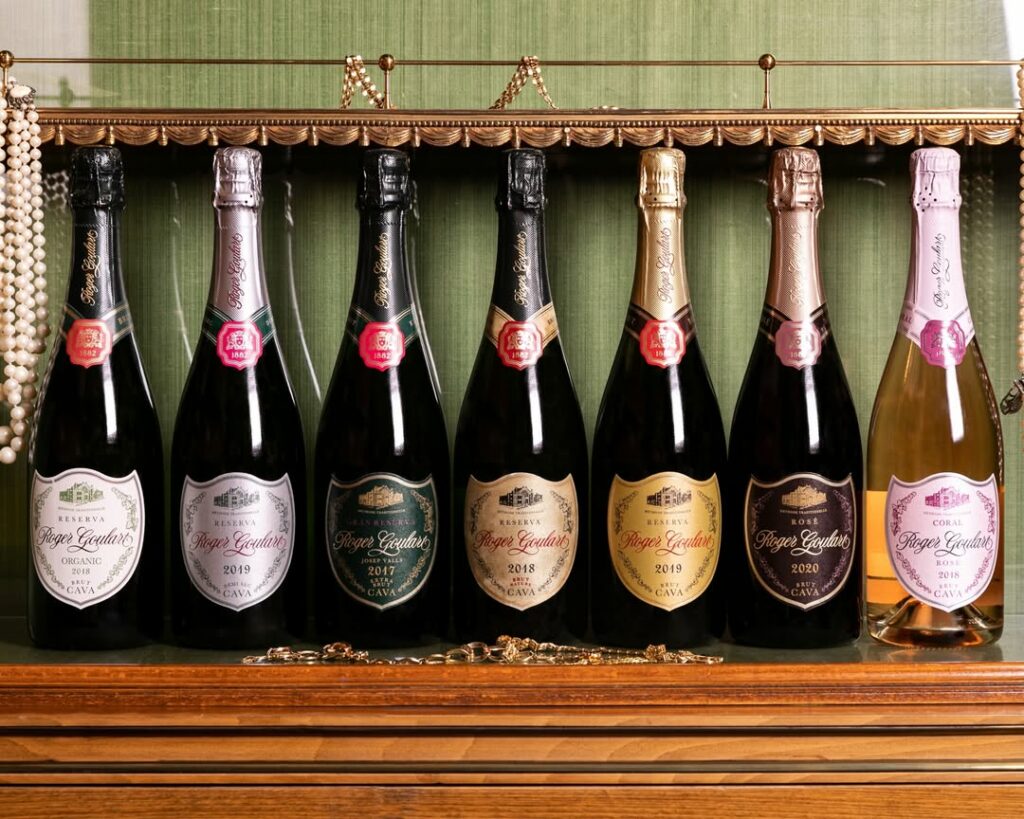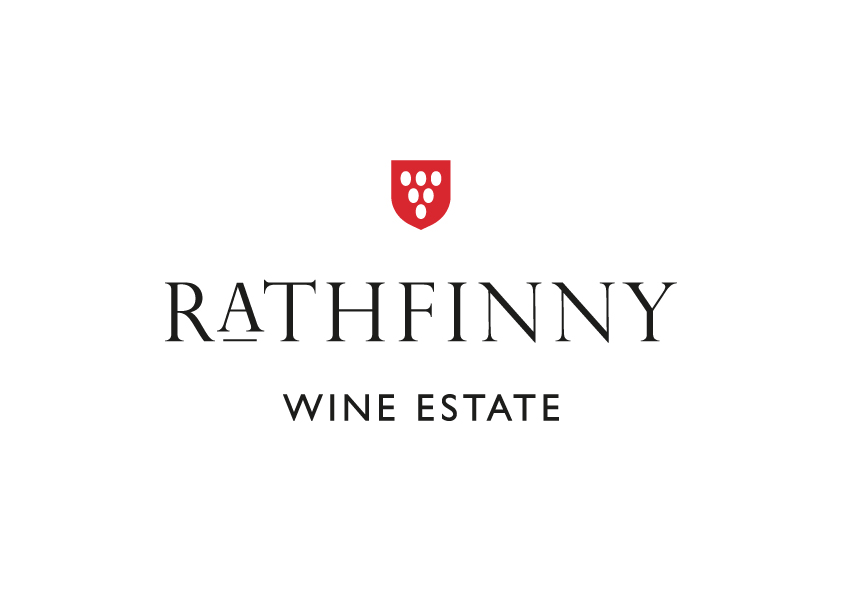Your cart is currently empty!
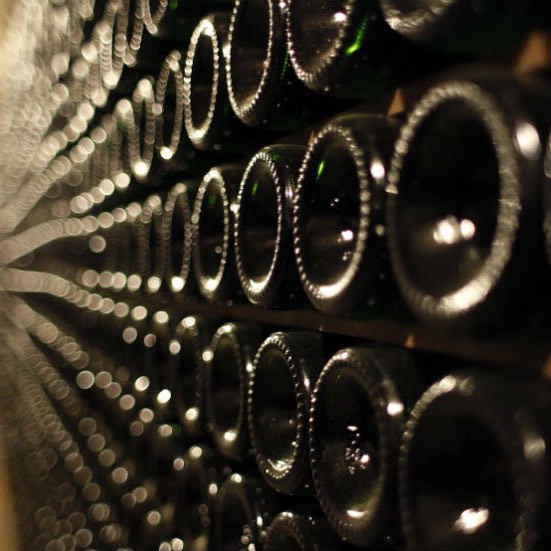
The Timeless Elegance of Méthode Traditionnelle: Crafting Sparkling Wine Excellence
—
For centuries, the most revered and complex sparkling wines have been crafted using a meticulous process known as the Méthode Traditionnelle, or traditional method. This labor-intensive technique, the same one employed in the Champagne region of France, distinguishes itself through a secondary fermentation that occurs directly within the bottle, bestowing upon the wine its signature fine bubbles, intricate flavors, and creamy texture. Unlike more industrial methods, the Méthode Traditionnelle is a testament to patience, precision, and a deep understanding of winemaking.
The journey begins with the production of a still base wine, carefully crafted from selected grape varietals. Once the primary fermentation is complete, this base wine embarks on a transformative journey within the bottle, guided by a series of distinct and crucial stages.
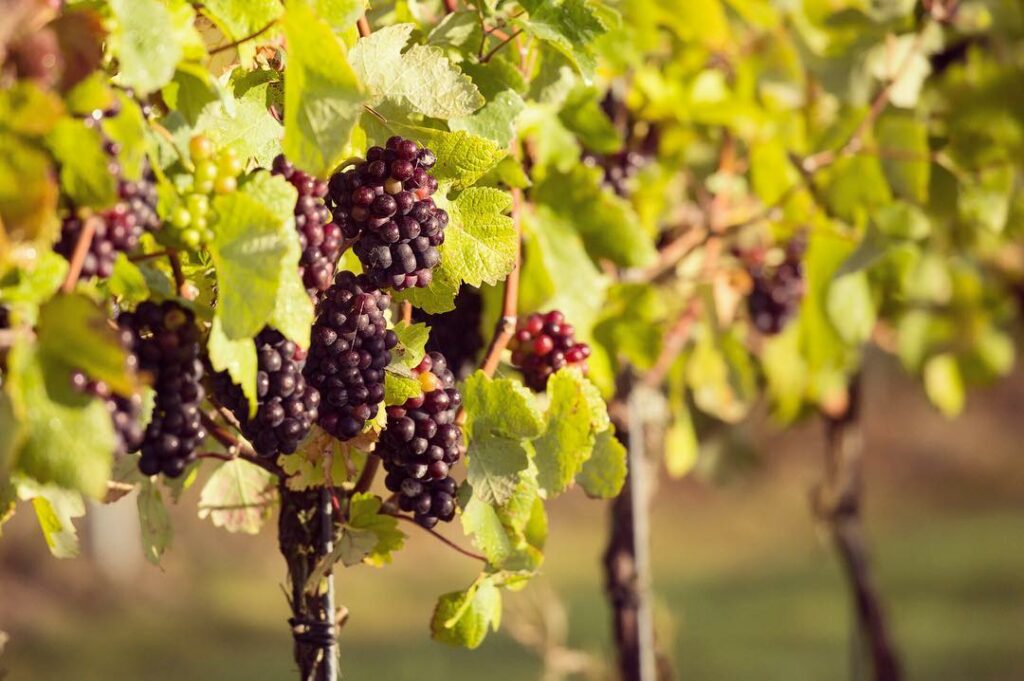
The Stages of Méthode Traditionnelle Production:
1) Base Wine Production
The process commences with the creation of a still, dry base wine. Grapes are harvested, crushed, and fermented using standard winemaking techniques. The characteristics of this base wine – its acidity, fruit profile, and overall structure – will significantly influence the final sparkling wine.
2) Blending (Assemblage)
Often, the base wine is a blend of different grape varieties, vintages, and vineyard sites. This crucial step, known as assemblage, allows winemakers to achieve the desired complexity, balance, and house style.
3) Bottling and Liqueur de Tirage
The blended base wine is then bottled along with a “liqueur de tirage,” a carefully measured mixture of base wine, sugar (typically cane sugar), and selected yeast cultures. The amount of sugar added determines the pressure and ultimately the size and intensity of the bubbles in the final wine.
4) Secondary Fermentation (Prise de Mousse)
The sealed bottles are stored horizontally in cool, dark cellars. The yeast in the liqueur de tirage begins to consume the sugar, producing carbon dioxide as a byproduct. Since the CO2 cannot escape the sealed bottle, it dissolves into the wine, creating the effervescence. This secondary fermentation also contributes complex flavor compounds, such as brioche, biscuit, and yeastiness.
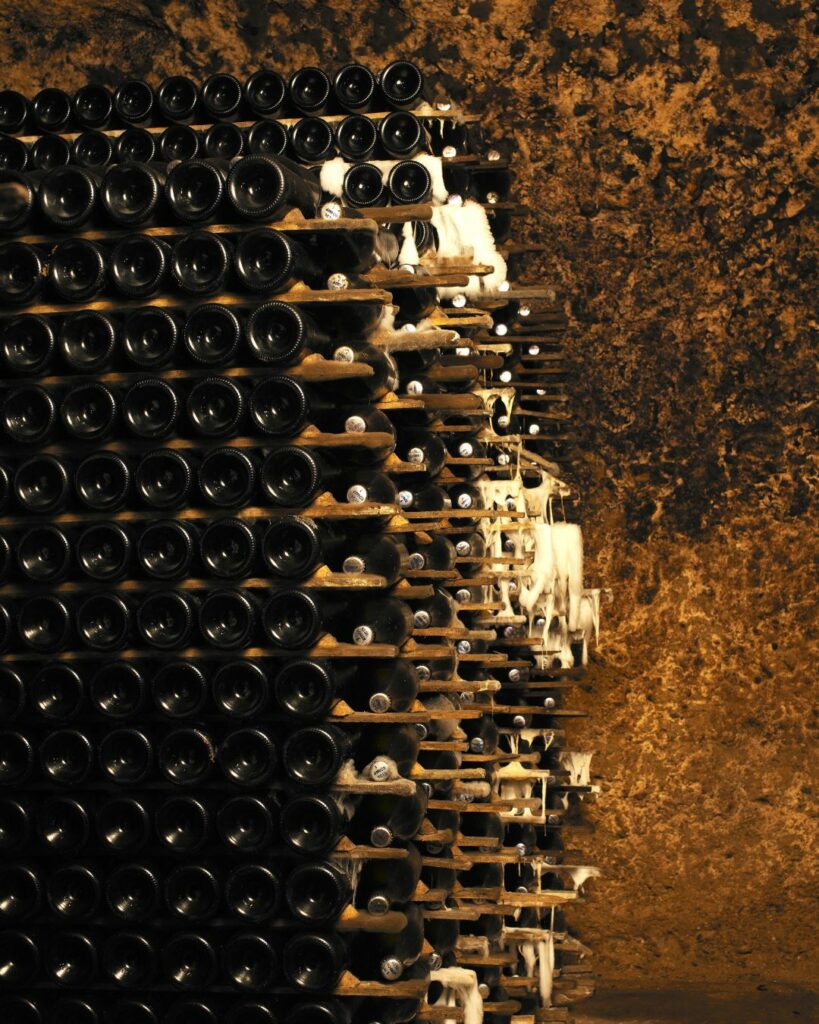
5) Aging on Lees (Sur Lie)
Following the secondary fermentation, the yeast cells die and form sediment known as “lees.” The wine is left to age in contact with these lees for a period ranging from several months to many years. This extended contact imparts a creamy texture, adds depth and complexity to the flavor profile, and enhances the integration of the bubbles.
6) Riddling (Remuage)
To prepare for the removal of the lees, the bottles undergo riddling. This gradual process involves progressively tilting the bottles, neck down, while gently rotating them. This action coaxes the sediment to slide down the sides of the bottle and collect in the neck, resting against the temporary cap. Traditionally done by hand on pupitres, this process is increasingly automated using gyropalettes.
7) Disgorgement (Dégorgement)
Once all the sediment has collected in the neck, the neck of the bottle is frozen in a brine solution. The temporary cap is then removed. The pressure inside the bottle forces out the frozen plug of sediment, leaving behind a clear sparkling wine.
8) Dosage (Liqueur d’Expédition)
After disgorgement, a “liqueur d’expédition,” or dosage, is added. This mixture of base wine and sugar (and sometimes a small amount of aged spirit) determines the final sweetness level of the sparkling wine, ranging from the very dry “Brut Nature” to the sweet “Doux.” The dosage also contributes to the wine’s overall balance and flavor profile.
9) Final Corking and Labeling
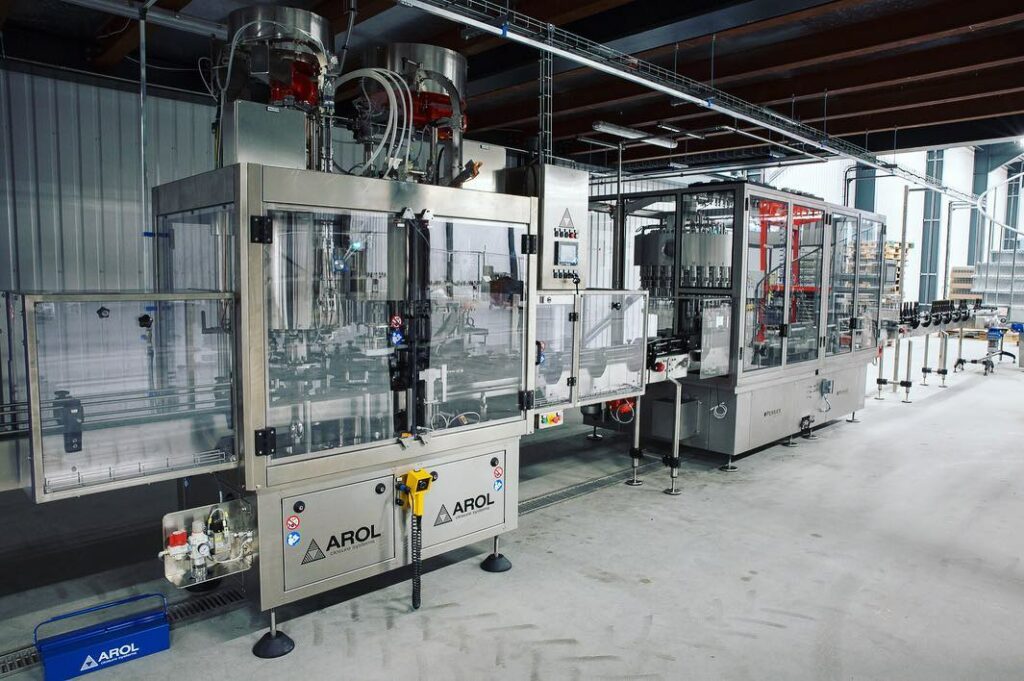
Finally, the bottles are fitted with their definitive cork and wire cage to withstand the internal pressure. They are then labeled and often undergo a further period of aging in the bottle before being released for sale.
Illustrious Examples: Roger Goulart and Rathfinny Estate
The commitment to the Méthode Traditionnelle is evident in the exceptional sparkling wines produced by estates around the world, each bringing their unique terroir and expertise to this time-honored craft. Two compelling examples, showcasing both heritage and innovation, are Roger Goulart from Spain’s Penedès region and Rathfinny Estate from England’s Sussex.
Roger Goulart
Steeped in history, Roger Goulart is a family-owned winery with a legacy dating back to 1882. Located in the heart of the Penedès, the birthplace of Cava, their commitment to the Méthode Traditionnelle is unwavering. Using traditional Cava grape varieties like Xarel·lo, Macabeo, and Parellada, alongside Chardonnay and Pinot Noir in some cuvées, Roger Goulart crafts complex and elegant sparkling wines that often undergo extended aging on their lees. Their Gran Reserva and longer-aged expressions showcase the profound depth and finesse that can be achieved through meticulous application of the traditional method. Notes of toasted bread, ripe fruit, and a creamy mousse are hallmarks of their exceptional Cavas, reflecting the rich history and dedication to quality that defines the estate.
Rathfinny Estate
Representing the burgeoning English sparkling wine scene, Rathfinny Estate in Sussex is a modern testament to the potential of the Méthode Traditionnelle in new terroirs. Established in 2010, Rathfinny was founded with the explicit ambition of producing world-class sparkling wines using the traditional method. Planting classic Champagne varieties – Chardonnay, Pinot Noir, and Meunier – on their south-facing chalk slopes, which share geological similarities with the Champagne region, Rathfinny meticulously controls every stage of production. Their commitment to extended lees aging results in elegant and refined sparkling wines with vibrant acidity, delicate fruit notes, and a distinctive minerality that reflects the Sussex terroir. Rathfinny’s dedication to quality and their embrace of the traditional method are positioning them as a key player in the exciting world of English sparkling wine.
The Enduring Appeal of Tradition
The Méthode Traditionnelle, with its intricate steps and dedication to time, remains the gold standard for producing high-quality sparkling wines. The in-bottle fermentation and extended lees aging impart a level of complexity and finesse that is simply unattainable through other methods. Producers like Roger Goulart, with their rich history, and Rathfinny Estate, with their modern vision, exemplify the enduring appeal and global reach of this timeless craft, consistently delivering sparkling wines that delight and captivate discerning palates worldwide. The bubbles born from tradition carry a story of dedication, patience, and the pursuit of sparkling wine excellence.

